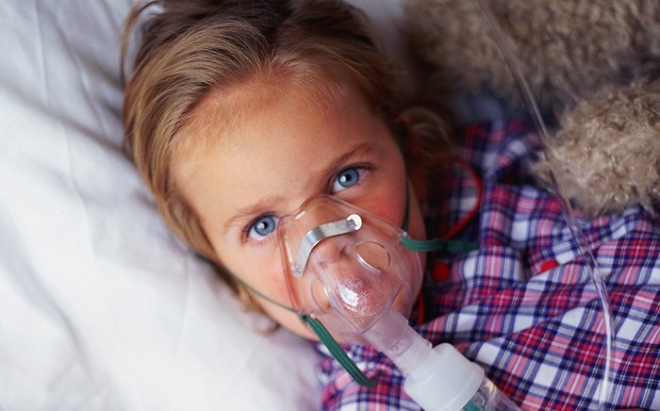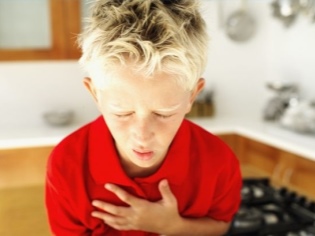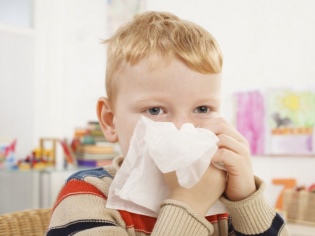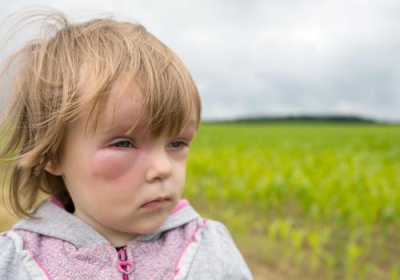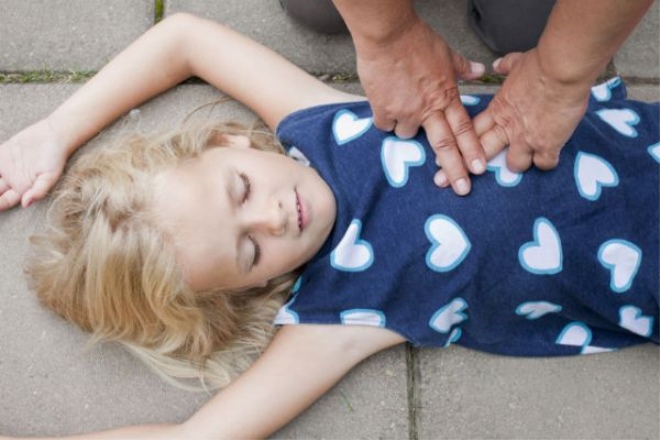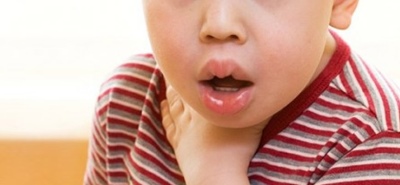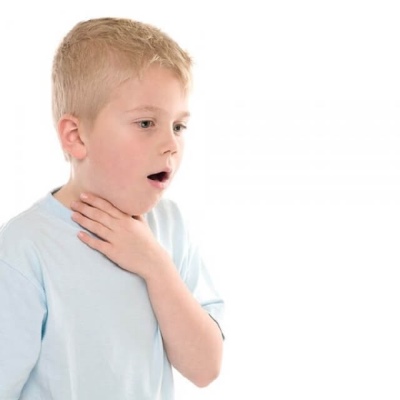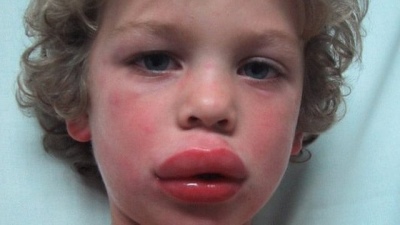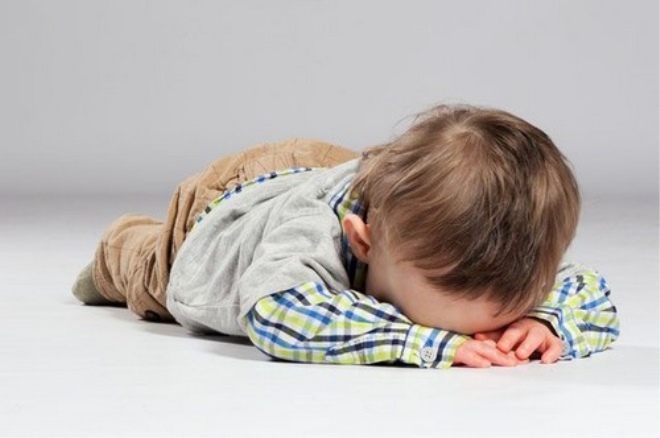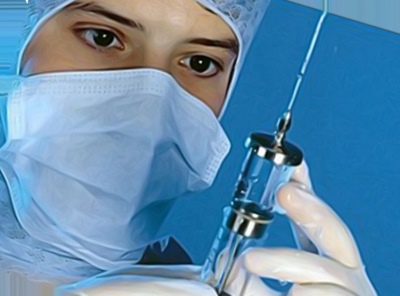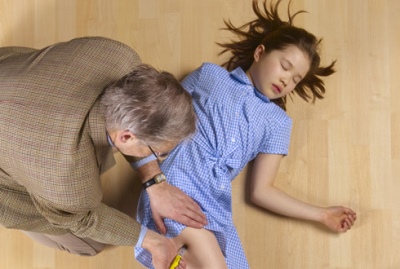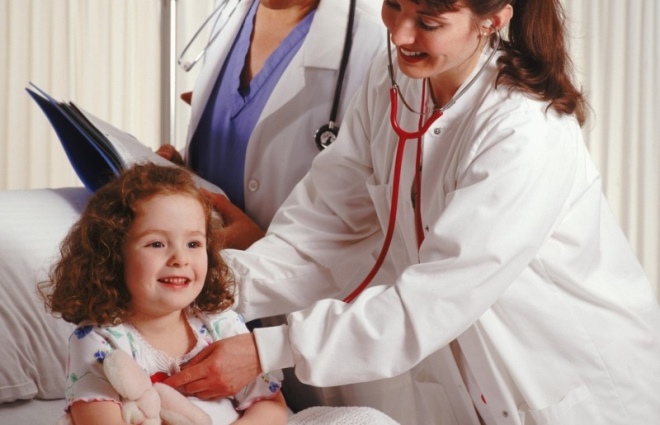Anaphylactic shock in a child
In children's practice, there are many different emergency conditions that require emergency care. Delay in the provision of therapy can lead to the most serious consequences and even death of the child.
What it is?
Pronounced decrease in systemic pressure blood and loss of consciousness when exposed to allergic causes is called anaphylactic shock. It is impossible to predict the onset of this dangerous state - every person has a risk of its onset throughout life.
The reasons
The development of anaphylactic shock results from the ingestion of various allergens into the children's body. But not all allergenic substances can cause a similar reaction - a special predisposition and hypersensitivity to a specific allergen are also needed.
How to provide emergency assistance for anaphylactic shock can be found in the following video.
At present there is no unified theory that would explain the development of pronounced pressure drop and impairment of consciousness during the action of an allergenic substance. Scientists believe that an impairment of the immune system with a high sensitivity to a specific allergen can be the impetus for anaphylactic shock.
The most common causes that can cause the development of this dangerous condition in children are:
-
Traumatic skin damage caused by various insect and animal bites. The most frequent hazards are bees, bumblebees, wasps, mosquitoes, snakes, and lizards. When bathing in the sea anaphylaxis can cause contact with the jellyfish. When a marine inhabitant touches a child, a burn often occurs on the skin, which can cause the development of anaphylaxis.
-
The use of drugs. The method of administration of drugs does not matter. Most often, anaphylaxis occurs on new drugs that have not previously been administered to a child. In the presence of cross-allergy, a baby may develop intolerance to individual components of therapeutic drugs. If a similar substance enters the body, anaphylaxis can develop.
-
Chemical burns from plants. Flowing juice, which contains a huge amount of various biologically active substances in high concentrations, can trigger a shock. After contact with the delicate skin of the child, they quickly penetrate the dermis and can cause anaphylaxis.
-
Allergenic food. Most often, babies develop anaphylaxis for nuts, chocolate, citrus and seafood. Also tropical fruits can lead to the development of a dangerous condition.
-
Detergents and household chemicals. Perfumery additives that make up such products contribute to the development of anaphylaxis in babies.
-
New clothes and shoes made from low-quality materials. The most dangerous are brightly colored products. In their manufacture unfair manufacturers use dyes of poor quality.
-
Vaccination. All vaccines and immunobiological preparations are allergenic and reactive enough. In children's practice, there are quite a few cases where vaccination caused anaphylactic shock in a baby. With this in mind, vaccination should be carried out only in a specially equipped room. It contains a kit or first aid kit to provide the necessary assistance in a critical situation.
How does it come about?
When an allergenic substance enters the body, a violent allergic reaction develops.A few minutes are enough to start it. In response to ingestion of a foreign biological agent, the cells of the immune system are activated. They begin to produce a huge amount of biologically active substances.
These components also cause a strong constriction of the blood vessels, which, in turn, leads to a decrease in pressure and impaired consciousness. Such a reaction is primarily protective. The body tries to limit the systemic distribution of the allergen through the bloodstream. However, with a strong sensitivity to an allergenic substance, a critical condition may develop.
During an allergic systemic response in the body, an enormous amount of a specific protein is produced - immunoglobulin E. The higher its content in the body, the more bright and rapid the symptoms will increase.
In newborns, adverse symptoms of shock develop rapidly. This condition is very dangerous and requires immediate hospitalization of the infant in the hospital.
Symptoms
Signs of anaphylactic shock develop rapidly and appear quite clearly. Typically, after a few minutes, the baby has a strong violation of general well-being. Recognize anaphylactic shock can be at home.
The following symptoms are characteristic of this critical condition:
-
Great weakness or complete loss of consciousness. The manifestation of this trait depends on the initial state of the child and the level of his / her individual susceptibility to the allergen.
-
Dizziness. The child’s gait is disturbed. In some cases, the baby is not even able to take a few steps. Being in a horizontal position somewhat reduces dizziness.
-
Drop in blood pressure. The measurement results are significantly below normal. In some critical situations, blood pressure can drop to almost 60/40 mm. Hg Art. and even lower.
-
Severe pallor of the skin. The nasolabial triangle may be bright blue.
-
Hands and feet cold to the touch.
-
Very weak pulsation in peripheral arteries when trying to measure a pulse. It is practically not detectable or difficult to determine. For the first stage of anaphylactic shock, an increase in pulse is characteristic. A decrease in this indicator is an unfavorable sign.
-
Swelling of the face and eyes. May not occur in all cases. This is the most characteristic symptom for angioedema. This symptom may precede the development of anaphylaxis.
Treatment
When identifying the first signs of a critical condition, the baby should immediately begin therapy. Late treatment can lead to the appearance of dangerous complications in the child, cardiopulmonary insufficiency, and in especially severe cases - even the development of a coma.
If the baby had contact with the allergen, and there were signs of anaphylaxis, there should be no delay. First of all, call an ambulance right away. and be sure to tell the controller that the child has signs of anaphylaxis. But to save the child must begin before the arrival of the doctor.
First aid
In order to prevent the development of dangerous consequences of an allergic critical condition, use the following algorithm of actions:
-
Lay the child horizontally and lift the legs. This situation will help improve the blood supply of vital organs: the heart and brain.
-
If the child has dental trays, remove them, as they can cause aspiration during vomiting.
-
Open doors and windows wide to improve the flow of fresh air into the room.
-
If your baby has lost breath and is not breathing, begin performing artificial respiration.
-
Monitor the pulse. In the absence of pulsation on the carotid arteries that are located on the neck, place your hands on your chest and begin to perform an artificial heart massage.
Urgent Care
Treatment for babies with anaphylactic shock is carried out immediately. Emergency treatment begins with an ambulance brigade. Moistened oxygen is given to the baby. With a sharp decrease in blood pressure, cardiopulmonary resuscitation is held for babies.
In difficult cases, when the heart rhythm is not sufficiently effective or there are signs of vascular insufficiency, adrenaline is used. The dosage of this drug is selected taking into account the age of the baby and his weight.
For elimination of adverse symptoms, injectable forms of antihistamines are used. To normalize the pressure and stop the allergic reaction, prednisone is introduced. In order to stabilize the condition of the baby, intensive infusion therapy is conducted with the introduction of a large amount of isotonic solutions or glucose.
The provision of qualified assistance is carried out in stationary conditions. In case of critical or severe condition of the baby - in the intensive care unit and intensive care. If the child is unconscious or in a coma, then he is given a massive infusion treatment using a whole complex of various drugs.
Prevention
In order to reduce the risk of possible anaphylactic shock in a child, use the following recommendations:
-
Have regular checkups with your child at an allergist. The doctor will prescribe all necessary tests that will help identify possible allergens. If such provoking substances are identified, care should be taken to ensure that they do not enter the children's body. Any contact with the allergen in the future can lead to the development of anaphylaxis.
-
Carefully plan a children's diet. All babies with allergic diseases should follow a hypoallergenic diet throughout their lives. Such medical nutrition implies a complete rejection of possible products that may cause exacerbations of the disease.
-
Strengthen immunity. Weakened children are more likely to react more acutely to the ingestion of allergens. Proper day regimen, good nutrition and active walks in the fresh air will help the immune system work better.
-
Use cream repellents. Such means will help protect the child from possible bites of various insects.
When the first signs of anaphylactic shock appear, do not panic in any way!
Only the consistent implementation of first aid measures will help prevent the development of dangerous states that can occur during anaphylaxis. A timely emergency treatment will surely save the baby’s life.

